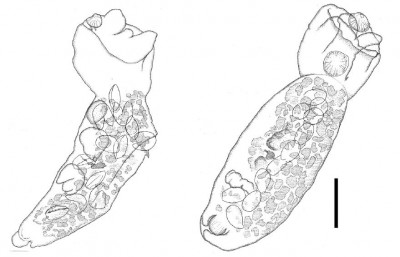NSU Newsroom
SharkBytes
Horizons
This version of NSU News has been archived as of February 28, 2019. To search through archived articles, visit nova.edu/search. To access the new version of NSU News, visit news.nova.edu.
This version of SharkBytes has been archived as of February 28, 2019. To search through archived articles, visit nova.edu/search. To access the new version of SharkBytes, visit sharkbytes.nova.edu.
Halmos Faculty Helped Find a New Species of Parasite
This fall, Halmos faculty member Christopher Blanar, Ph.D. co-authored a paper entitled, “Validity of the Diplostomoidea and Diplostomida (Digenea, Platyhelminthes) upheld in phylogenomic analysis”. The group studied the parasite ordered Diplostomida. These includes schistosomes, that are parasitic flatworms responsible for a highly significant group of infections in humans termed schistosomiasis, which is considered by the World Health Organization as the second-most socioeconomically devastating parasitic disease (after malaria), with hundreds of millions infected worldwide.
The family tree of this order has been hard to sort out- many of the taxa are difficult to distinguish morphologically, so you need to use molecular phylogeny instead. “The molecular wasn’t straightforward either, as there was discord between the results generated by nuclear vs mitochondrial DNA.”, says Blanar. While answering questions about the phylogeny of the Diplostomida, the group had the added bonus of describing a whole new species. Lead author Sean Locke, Ph.D. from the University of Puerto Rico has named it Cotylurus marcogliesei in honor of Dr. David Marcogliese who supervised both Locke and Blanar’s post-docs at Environment Canada. “It’s the first time I’ve ever had the privilege of participating in the description of a new species”, said Blanar.
For more information https://doi.org/10.1016/j.ijpara.2018.07.001
